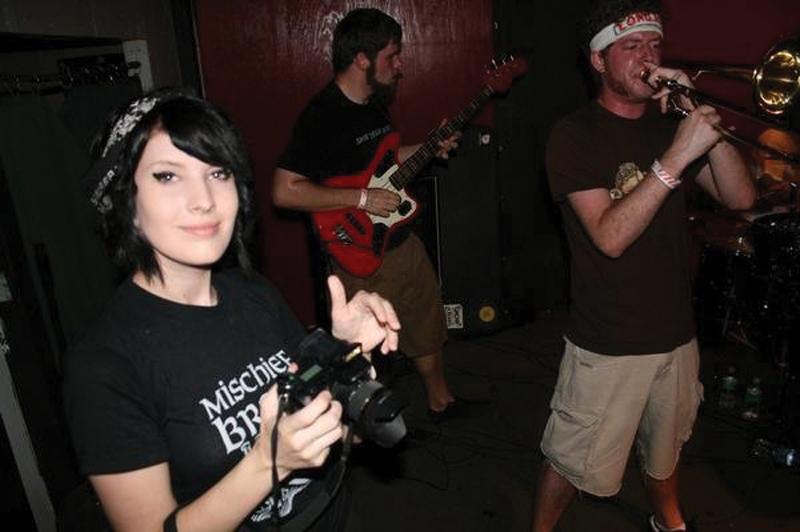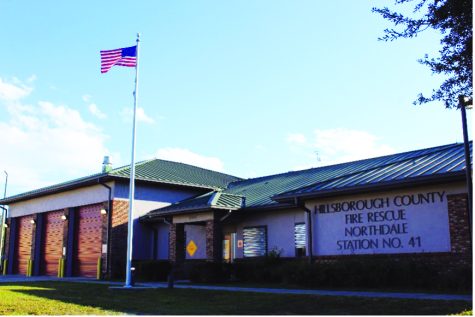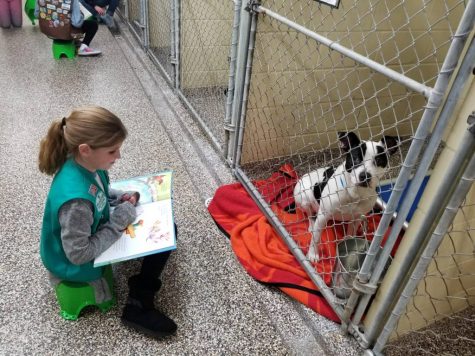Pacemaker does not set pace on living
She braced herself against a bench because she knew that her pacemaker was about to defibrillate, and from experience, she knows it will throw her backwards five or more feet. On her way to a party, her pacemaker has different plans for her. She instructs a friend to call an ambulance as she hears the sound of the defibrillator inside of her beginning to charge. She tries to control her anxiety as an ambulance arrives, knowing the shock that is about to hit her. As her heart rate quickly approached 250 bpm, she is carried in an ambulance to the hospital, away from the party and her friends.
*********
As she sits in the crowded Starbucks, nursing a decaf latte, nobody would be able to guess that Pamela Hoogeboom, a 23 year old student, has a heart condition and a pacemaker. “It [pacemaker]… becomes your little robot buddy at some point,” she says, pointing to her heart.
As she reaches for the sugar, her arm reveals a few tattoos, “I have a portrait of my dad who died of a heart condition,” she explains. “My cardiologist gives me nothing but guff about my tattoos, but not because of my pacemaker, he says ‘you’re just a young lady you shouldn’t be getting tattoos,’” she jokes.
Hoogeboom was diagnosed when she was 12, during a soccer game. At 17, she had to have a pacemaker. A short time later, after being hospitalized due to a heart attack caused by not following doctor’s orders, she realized her life had to change.
Hoogeboom is not the only young person living with a heart problem, and as the number of students with pacemakers and heart conditions grows, those facing heart diseases fear that they will not live the lifestyle they want.
Although the rate of death from a Cardiovascular Disease (CVD) is down 30.6%, only 37% of high schoolers are meeting the recommendations for physical activity, that number dropping to a mere 20.7% by the age of 20, according to the American Heart Association. This is causing more heart disease in younger people. Heart disease is no longer an old man’s mountain to face.
Hoogeboom feared that she would not get to enjoy the typical student lifestyle. Parties, smoking and loud music were no longer an option. When the doctors told her she could no longer go to concerts, her favorite pastime, she was devastated. “The big thing is I was always a show kid, and I was at a show every day of the week if possible, and they said ‘Oh well you can’t stand by the amps (due to the bass) you shouldn’t go to shows anymore,’ and I nearly died when they told me that.”
Since finding out the grim news about concerts, however, Hoogeboom has learned that shows are still an option, as long as she watches them far from the stage. She can drink (since it is a depressant and actually helps her heart), but she has had to give up caffeine and cigarettes. She also has to regularly take her medication, but she can still participate in most regular student activities, although you won’t see her on a roller coaster or bungee jumping.
“[When] I first got my pacemaker I, I felt like it kind of changed literally everything,” she said. “I was at the hospital a lot, and that put a lot of strain on my family and friends and I was at that point in my life where I was the center of my own world.”
“Now that I am living much healthier, it is a lot easier and my life, sometimes I even forget I have a pacemaker,” she says.
With hope, the students and young people learning how to deal with heart issues can learn that they don’t have to see this as the end normalcy.
In a few years, Hoogeboom will have to get a new pacemaker, she will have a pacemaker for the rest of her life, and that doesn’t scare her anymore.
“It’s, okay to be angry, and its okay to think it’s unfair, but the more you have it, it really does kind of grow a part of you. I can’t imagine not having my pacemaker now and although at the time it may seem like the worst possible thing that could happen, it really is for the best for you.”
Krista Byrd is the Editor-In-Chief of The Hawkeye.
Krista Byrd was born in Brandon, Florida. She is currently working on her Associates degree in...







